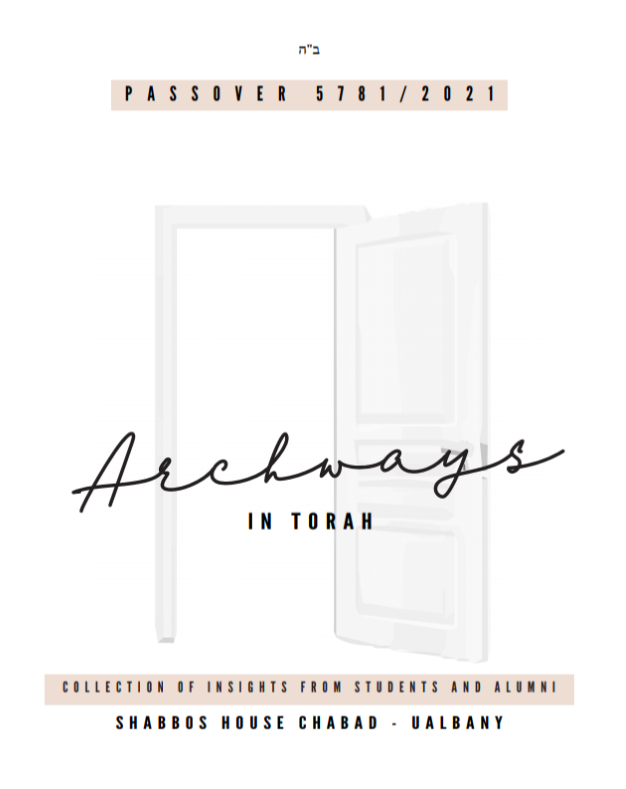 Welcome to our third edition of “Archways in Torah” for the Passover holiday of 5781/2021.
Welcome to our third edition of “Archways in Torah” for the Passover holiday of 5781/2021.
Click here to download/view/print this 30-page PDF file of “Archways” for Passover 5781/2021.
We first began this “Archways” publication concept for Shavuot 2020 when most everyone was staying home during the intensity of Covid-19. It was a platform for alumni and students to share words of Torah with one another and to have interesting reading material for the holiday.
The circumstances have changed for the better since June of 2020, most of us are not in the lockdown experience anymore, though we still have a long way to go before things get back to normal. While we had less student and alumni contributors to this Passover booklet (perhaps this was a busy time and we did get a late start with it) we decided to go ahead and put it together because we had increased interest from alumni and others who were interested in reading it.
Why the title archways? First of all, everyone who went to UAlbany is very familiar with its ubiquitous myriad of archways. Archways have lots of symbolism: They are supportive yet open, they are entrances and exits at the same time, they are guideposts that draw and raise our eyes upward and frame our perspective. UAlbany buildings have many archways on every side, for all its length and breadth, from every angle, inside and out. All of this can be a metaphor for Torah.
Archways certainly have extra symbolism on Passover, as the Jews in Egypt on the first-ever Passover were commanded to smear blood of the Paschal Lamb on their doorposts and lintel and to stay inside their homes while the Angel of Death went through Egypt during the plague of the firstborn. And a highlight of our Seder is when we open the door for Elijah!
And a homophone of the word Pesach (spelled with the letter Samech) is Pesach (spelled with a letter Taf) which means doorway or opening. Indeed, Passover was (and is) a break-through!
Love,
Mendel and Raizy Rubin
Shabbos House Rohr Chabad Jewish Student Center
